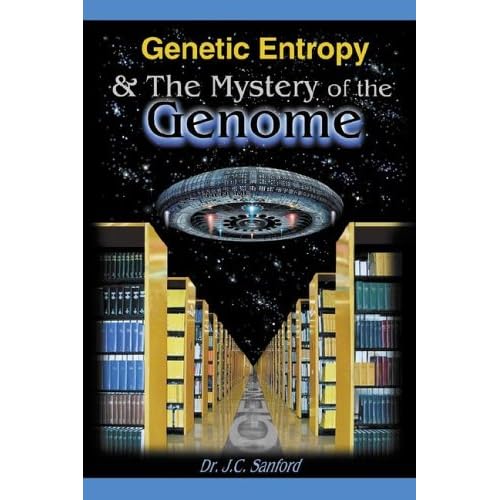What are the speed limits of naturalistic evolution? We know from experience it takes time to evolve a species. Would naturalistic evolution be fast enough in geological time to turn a cow into a whale, an ape-like creature into a human? What are the speed limits of evolution?
To give an illustration of just how hard it might be to evolve a population, consider that there are about 6.5 billion people on the planet geographically dispersed. Suppose a single advantageous mutation (say a single point mutation or indel) occurred in a single individual in one of those 6.5 billion people. How long would it take for that mutation to propagate such that every human on the planet had this mutation? It would be a pretty long time. Sufficient numbers of people would have to have their descendants exchange genes for centuries. And this measly change is but one nucleotide in 3,500,000,000 base pairs!
The Darwinists will argue, “but that wasn’t the way it was in the past, it was easier to evolve things millions of years ago.” Perhaps. Evolving a large geographically dispersed population is a colossal problem for Darwinian evolution as you can see. Thus (using DarLogic) since Darwinian evolution is true (cough), we must assume this implies populations in the past were much smaller and “well-stirred” (meaning geographic barriers are dismissed and every individual has the same chance of mating with anyone else in the population). Bear in mind also, the population can’t be too small either, since evolution needs a certain number of individuals to be generating a sufficient number of beneficial mutations.

So given optimal conditions, how fast could we evolve a population? Haldane (pictured above), suggested that on average, 1 “trait” per 300 generations could be fixed into a population of mammals. In the modern sense, we can take this “trait” to even be a single nucleotide [in the traditional sense we look for phenotypic traits, but the problem of evolving single nucleotide in the genome still remains, thus for the sake of analysis a single nucleotide can be considered something of a “trait”].
But such change is obviously too slow to account for 180,000,000 differences in base pairs between humans and chimps. [chimps have about 180,000,000 base pairs more DNA than humans, if anyone has better figures, please post]. This poses something of a dilemma for the evolutionary community, and this dilemma has been dubbed, “Haldane’s dilemma”. If Haldane’s dilemma seems overly pessimistic, ponder the example I gave above even for a smaller population (say 20,000 individuals within a 200 mile radius ). In light of this, 1 nucleotide per 300 generations might not seem like a stretch. If anything, Haldane’s dilemma (even by his own admission) seems a bit optimistic!
Various solutions have been explored to Haldane’s dilemma, such as multiple simultaneous nucleotide substitutions. But such “solutions” have their own set of fatal problems. One could make a good case, Haldane’s dilemma has never been solved, nor will it ever be….

And if Haldane’s dilemma were not enough of a blow to Darwinian evolution, in the 1960’s several population geneticists like Motoo Kimura demonstrated mathematically that the overwhelming majority of molecular evolution was non-Darwinian and invisible to natural selection. Lest he be found guilty for blasphemy, Kimura made an obligatory salute to Darwin by saying his non-Darwinian neutral theory “does not deny the role of natural selection in determining the course of adaptive evolution”. That’s right, according to Kimura, adaptive evolution is visible to natural selection while simultaneously molecular evolution is invisible to natural selection. Is such a position logical? No. Is it politically and intellectually expedient? Absolutely….
The selectionist viewpoint is faced with Haldane’s dilemma. But does the neutralist viewpoint (Kimura) have an alternative mechanism that will get around Haldane’s selectionist dilemma? It seems not, as neutral theory has other sets of problems.
What has since resulted has been a never ending war between the selectionists and neutralists. The selectionists argue that natural selection shaped the majority of molecular evolution and the neutralists argue natural selection did not. Each warring camp finds fatal flaws in the ideas of their opponent. The neutralists rightly argue from first principles of population genetics that selection did not have enough resources to evolve billions of nucleotides, and the selectionists rightly point out that large amounts of conserved sequences fly in the face of neutralist theories. The net result is that both camps demonstrate that they are both dead wrong.
To make matters worse, there are even more dilemmas to deal with such as Nachman’s U-Paradox. Looming on the horizon, and even more problematic would be the fact DNA might only be a FRACTION of the actual information that is used to create living organisms. This idea of the organism (or at least a single cell) as being the totatlity of information versus only the DNA was suggested by one of the finest evolutionary biologist on the planet, Richard Sternberg. He argues his case in the peer-reviewed article Teleomorphic Recursivity. And by the way, these discussions of selectionist speed limits assumes the multitude of Irreducibly Complex structures in biology are somehow visible to natural selection….
What then will we conclude if we find functionality in those large regions of molecules which evolved independent of natural selection? How do we account for designs that cannot possibly be the result of natural selection? Can we attribute them to the random chance mechanisms of neutral theory? Unlikely. Evo-devo might offer some relief, but the proponents of Evo-Devo do not yet seem to realize that even if they are right, the ancestral life forms might have to be in a highly improbable, specified state, exactly the kind of state that suggests front-loaded intelligent design.
I’m opening this thread to continue a discussion of these and other topics which I also raised at PandasThumb in this thread. I found a commenter named Caligula who gave very substantive criticisms to my ideas in a precise and technical manner, and which I found worthy of giving a fair and civil hearing here at UD. I also invited the authors at PT to air their objections here (with the exception of PvM who has been banned). If Caligula and I must take the discussion outside of UD, we will be glad to, but I thought the topics would be of interest and educational to readers of both weblogs.
With that, I’ll just let the conversation continue in the comment section as we try to answer the question, “what are the speed limits of naturalistic evolution?”
Salvador
PS Two books relevant to this discussion by ID proponents are Genetic Entropy by respected Cornell geneticist John Sanford.

and The Biotic Message by Electrical Engineer and pioneer of Discontinuity Systematics, Walter ReMine.
